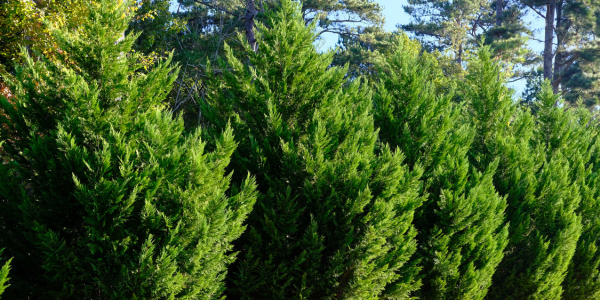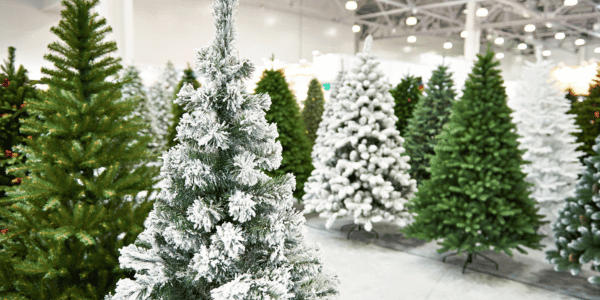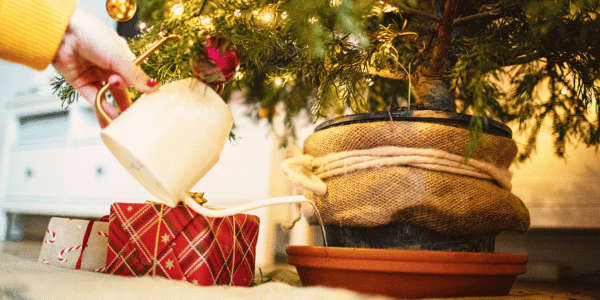The Best Christmas Trees for Every Home
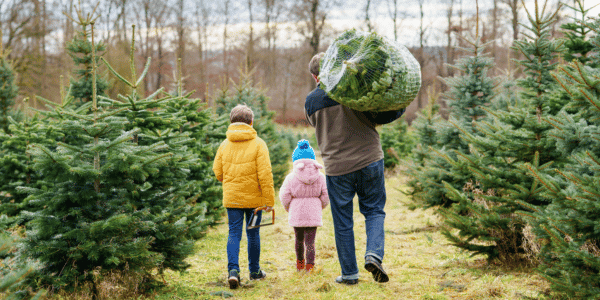
Christmas trees are the centerpiece of holiday decorating. In fact, 25-30 million real trees sell each year, filling any room with that warm, fuzzy feeling that makes winter wonderful. But with all the different Christmas tree types, how do you know which one is best for you? We’ll help you decide! Follow along for details on the most popular Christmas trees, how to decorate them, and what you need to do to make your real Christmas tree last.
Real Christmas Trees vs. Artificial Christmas Trees
Before we get into the different types of Christmas trees, let’s explore the tree categories: real and artificial. As their names suggest, real Christmas trees are grown, while artificial Christmas trees are made with plastic to resemble their natural counterparts. Each one comes with pros and cons to consider. Here are the advantages and disadvantages of both types:
Real Christmas Trees
- Pros: Biodegradable, can likely be replanted, have natural aromas, and a real feel
- Cons: Extra maintenance, increased fire risk, yearly purchases, potential for insect attraction and pesticides that could harm pets
Artificial Christmas Trees
- Pros: Convenient, low maintenance, no irritants for allergies, reusable, flame-retardant
- Cons: Not environmentally friendly, non-recyclable, and require yearly storage
RELATED: How to Keep Your Christmas Tree Thriving All Season Long
Popular Types of Real Christmas Trees
Real Christmas trees come in all shapes and sizes, and many artificial trees are made to mimic their look and feel. These are the most popular types of Christmas trees:

Fir Trees
Known for their delightful seasonal scents and strong branches, fir trees have needle-like leaves that don’t heavily shed, and branches built for piling on Christmas tree decorations. Select a variety with a dark-green color that contrasts well with your ornaments. Depending on the type of Fir, you’ll find hints of green, blue, and silver to match tinsel!
Varieties: Balsam Fir, Frasier Fir, Canaan Fir, Douglas Fir, Grand Fir, White Fir, Noble Fir
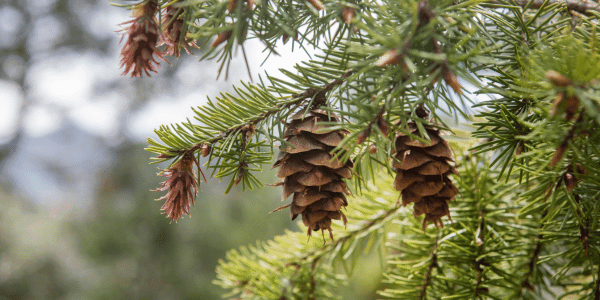
Pine Trees
Pine trees can grow up to be well over 100 feet tall in the wild, making them the ideal trees for outdoor holiday events. Each variety offers different levels of branch strength and shedding to fit personal preferences. Take advantage of their pinecones as you design. Use their longer needles (sometimes stretching out five inches!) to spread ornaments and lights for a dazzling display.
Varieties: White pine, Scotch Pine, Virginia pine

Spruce Trees
A more colorful choice, spruce trees offer tones of blue and bluish-green. When grown naturally, each variety is associated with a specific region. With sharp and stiff needles, this tree is ideal for heavier ornaments that make your Christmas setup pop.
Varieties: (Colorado) Blue Spruce, Norway Spruce, White (Canadian) Spruce
Cypress Trees
Tall and narrow, Cypress trees are great if you’re looking to try something new and get away from the standard Christmas tree. Use the tree trimmings to create an interesting wreath that’ll catch the eye of visitors.
Varieties: Arizona Cypress, Leyland Cypress
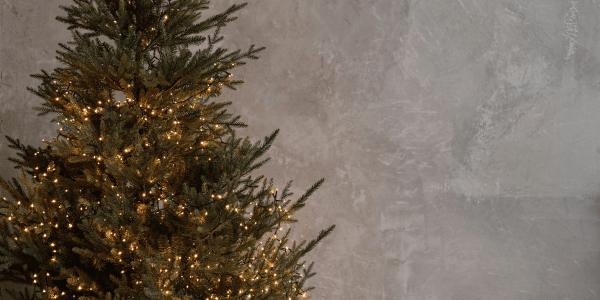
Cedar Trees
Eastern red cedar trees are sometimes used as Christmas trees due to their strong scent, size, shape, dark green color, and compact branches. Whether they adorn a mantle or accompany a ribbon in a nicely-wrapped gift, these branches are perfect for Christmas decorations. Since they’re not frequently grown for the holidays outside of Iowa, their native state, you’ll be sure to stand out if you can get your hands on one.
Varieties: Eastern Red Cedar, Western Red Cedar, Incense Cedar, Port Orford Cedar
RELATED: 8 Holiday Traditions From Around the World That Will Surprise You
Types of Artificial Christmas Trees
Artificial Christmas trees come in a variety of forms and offer a wealth of features. Choosing one that matches your style and budget may be easier said than done. Here are a few of the most popular versions of fake Christmas trees:
Pre-Lit
Minimizing the hassle of untangling cords and wires, pre-lit Christmas trees already come decked out with lights. Test the lights before buying, and make sure you love them. While pre-lit Christmas trees are convenient, you’re locked into the same look and feel for good.
Unlit
To experience the joy of decorating a tree from scratch—stringing lights and all—unlit artificial trees are the way to go. With a blank canvas, add anything you want to create winter magic. Think ribbon, tinsel, and your favorite Christmas tree ornaments. Unlit trees may even be cheaper since you’re not paying for the cost of lights.
Slim/Space-Saving
Living in an apartment? Need a tree that can squeeze into a workplace? Some artificial trees are built to be a compact Christmas decoration for these exact scenarios. Take advantage of these trees to fill that corner that hasn’t gotten enough holiday love.
Flocked
Snow takes Christmastime to another level, and flocked trees offer the look of snowfall indoors, with artificial “snow” added to leaves. A flocked tree enchants a crowd, filling them with the holiday spirit. Flocked trees may be more expensive, but they're worth it!
BONUS: Real Christmas Tree Care Tips
If you go down the real Christmas tree route, your work isn’t done once you’ve decorated. Here’s our top Christmas tree care tips:
- Tree health. Choose a healthy Christmas tree from the start. Look for one with plenty of hearty, healthy pine needles that has been grown or displayed in a shady location for the longest lifespan.
- Trunk trimming. Trim about ½ an inch straight across before your Christmas tree is up in its stand to avoid resin quickly seeping out from the original cut area and hardening; that can prevent your tree from absorbing water.
- Water. Christmas trees need about one quart of water for every inch of the trunk's diameter.
- Decorations. Whenever possible, use LED lights, as they emit less heat and are more energy efficient.
- Heat. You should set up your tree away from direct heat sources in a well-ventilated area. Proximity to heat vents and fireplaces can cause a tree to dry out more quickly, reducing its lifespan.
Related: Holiday Card Photo Tips
More Holiday Decorating Help
Every Christmas tree type helps create that quintessential Christmas scene indoors. As you decorate the exterior of your house with Christmas charm, read our guide, “8 Safety Tips for Hanging Outdoor Lights.” It has all the information you need to have a holly, jolly holiday with a safe and spectacular view.
Christmas Tree FAQs
When should you take down the Christmas tree?
According to some traditions, it's considered good luck to leave your Christmas tree up until 12 days after Christmas, which falls on January 6.
How much is a real Christmas tree?
The average price of a live Christmas tree is around $80-$100.
How long does a Christmas tree last?
If properly cared for, a Christmas tree can last up to six weeks.
How can I dispose of my Christmas tree?
Many neighborhoods have local tree curbside pickup or drop-off disposal, recycling, and composting programs. Trimmings and cuttings of trees can be used to make wreaths and potpourri, decorate mantles, doorways, and tablescapes, or help create flower or planter arrangements.
